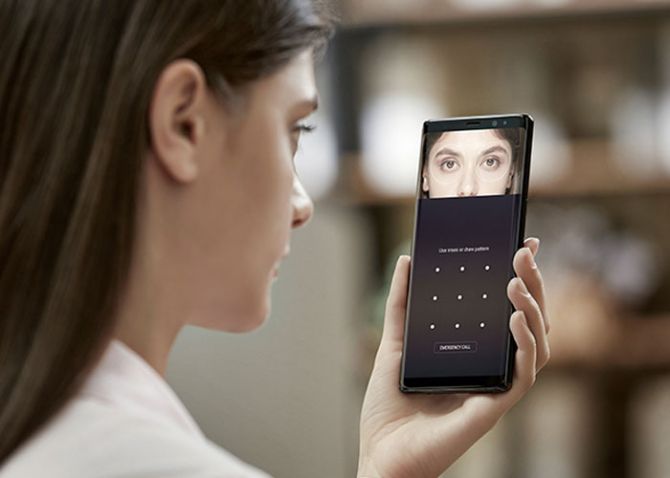Abhik Sen tries it out.

Photograph: Courtesy samsung.com
The Samsung Galaxy Note 8 (₹67,900) is bigger than the S8 and S8+, but only slightly.
It's also a tad heavier. But the real differentiator is the dual cameras on the back.
I set the phone to unlock both by face recognition as well as iris scanning; the two can't be used together.
Iris scanning worked well for me indoors, but when I asked my wife to set it up, she had to remove her contact lenses for this feature to work.
The face recognition feature worked accurately, too.
In the limited time I used the phone, I didn't face any lag.
The phone, with 6GB RAM, didn't heat up while playing Real Racing 3 and Asphalt 8: Airborne.
The 6.3-inch screen is a tad tall for my liking, though it stayed true, even in direct sunlight.
While the speaker is tiny, the bundled AKG earphones are quite good.

Photograph: Courtesy samsung.com
Samsung has cut down on the bloatware in this iteration of Nougat.
But one customisation I really liked was being able to create a single shortcut on the edge panel to open two apps in split-screen mode (like I set the browser and note-taking app).
The S Pen is as good as ever and I loved taking notes while the screen was off.
Samsung is also offering a whole lot of options to customise the phone.
The smartphone comes with dual 12-megapixel (MP) primary cameras — one with a wide-angle and the other with a 2X optical zoom.
Using the Live Focus feature, one can adjust the level of blur. This feature works well when the light is just right.
And whenever you shoot a picture in this mode (with the zoom lens), the wide-angle camera also takes a back-up shot.
The 8MP front camera is fabulous for video calls and 'groupfies'.
The phone, even with heavy multimedia usage, lasts through the day on a single charge.
The Samsung Galaxy Note 8 is a workhorse phablet par excellence.
But if you can do without the dual cameras and S Pen, the S8 is a value proposition.











